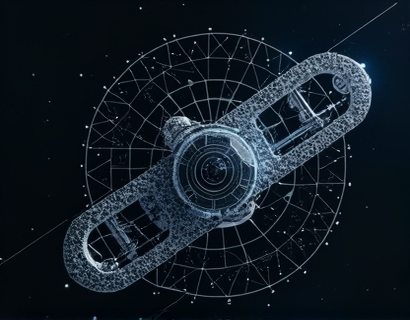Unlocking the Cosmic Nexus: Exploring the Intersection of Science and Mathematics to Decode the Universe's Mysteries
The universe, in its vast and intricate complexity, has long been a source of fascination and wonder for humanity. At the heart of our quest to understand this cosmos lies the profound intersection of science and mathematics. These two disciplines, often seen as distinct, are in reality deeply intertwined, each illuminating the path for the other. This article delves into the intricate connections between science and mathematics, exploring how these fields together decode the universe's deepest mysteries.
The relationship between science and mathematics is not merely one of utility but of fundamental necessity. Science seeks to describe and explain the natural world through observation and experimentation, while mathematics provides the language and tools to formulate these descriptions with precision and elegance. The universe, with its myriad phenomena, from the smallest subatomic particles to the largest cosmic structures, offers an endless array of puzzles that require the combined power of scientific inquiry and mathematical reasoning to solve.
Mathematics as the Language of the Universe
The notion that mathematics is the language of the universe is not a new idea. Philosophers and scientists for centuries have marveled at the uncanny ability of mathematical concepts to describe physical reality. Galileo Galilei famously stated, "All the phenomena of nature are written in the language of mathematics." This sentiment echoes through the works of Isaac Newton, Albert Einstein, and many others who have relied on mathematical frameworks to unlock the secrets of the cosmos.
Mathematics provides a universal language that transcends the limitations of human perception and cultural differences. It allows scientists to communicate complex ideas with clarity and precision. For instance, the equations of motion in classical mechanics, the wave equations in electromagnetism, and the Schrödinger equation in quantum mechanics are all mathematical expressions that describe physical phenomena with unparalleled accuracy. These equations are not merely human constructs but reflections of underlying truths about the universe.
The Role of Mathematics in Modern Physics
In modern physics, mathematics plays an even more critical role. The theories that have revolutionized our understanding of the universe, such as relativity and quantum mechanics, are deeply mathematical in nature. Einstein's theory of general relativity, for example, is formulated using the language of differential geometry, a branch of mathematics that deals with curved spaces. The famous equation E=mc^2, which expresses the equivalence of mass and energy, is a direct consequence of mathematical reasoning.
Quantum mechanics, the theory that describes the behavior of particles at the smallest scales, relies heavily on mathematical structures such as Hilbert spaces and operators. The wave function, a central concept in quantum theory, is a mathematical function that encapsulates the probability distribution of a particle's position and momentum. The Schrödinger equation, which governs the evolution of the wave function, is a partial differential equation that requires sophisticated mathematical techniques to solve.
Mathematics in Cosmology
Cosmology, the study of the large-scale structure and evolution of the universe, is another field where mathematics and science converge. The Big Bang theory, which posits that the universe began as a hot, dense state and has been expanding ever since, is supported by a wealth of observational evidence. Mathematical models, such as the Friedmann-Lemaître-Robertson-Walker (FLRW) model, describe the expansion of the universe and predict the cosmic microwave background radiation, a relic from the early universe.
Dark matter and dark energy, two mysterious components that make up about 95% of the universe's total mass-energy content, are inferred through mathematical analysis of gravitational effects and cosmic observations. The ΛCDM model, the current standard model of cosmology, uses complex mathematical equations to integrate the effects of dark matter and dark energy into the evolution of the universe.
Mathematics in Astrophysics
Astrophysics, the study of the physical properties and processes of celestial objects and phenomena, is equally dependent on mathematical tools. The behavior of stars, galaxies, and black holes is described using equations derived from the principles of physics and mathematics. For example, the Tolman-Oppenheimer-Volkoff (TOV) equation, a differential equation, is used to model the structure of neutron stars, determining their maximum mass and stability.
Numerical simulations, which are essential in astrophysics, rely on advanced mathematical algorithms to solve complex systems of equations that describe the dynamics of celestial bodies. These simulations help scientists understand phenomena such as supernova explosions, gravitational waves, and the formation of cosmic structures.
Interdisciplinary Connections
The interplay between science and mathematics is not limited to physics and cosmology. Other fields, such as biology, chemistry, and even social sciences, benefit from mathematical modeling and analysis. In biology, for instance, mathematical models are used to study population dynamics, genetic inheritance, and the spread of diseases. In chemistry, quantum mechanics and statistical mechanics provide the mathematical frameworks for understanding molecular interactions and chemical reactions.
In data science and machine learning, a subset of artificial intelligence, mathematical algorithms play a crucial role in analyzing large datasets and making predictions. These applications demonstrate the broad and profound impact of mathematics on various scientific disciplines, reinforcing the idea that mathematics is an essential tool for understanding the natural world.
Challenges and Future Directions
Despite the significant progress made, there are still many mysteries in the universe that remain unsolved. The reconciliation of general relativity and quantum mechanics into a unified theory of quantum gravity is one of the most pressing challenges in modern physics. This endeavor requires new mathematical tools and insights, pushing the boundaries of both science and mathematics.
String theory and loop quantum gravity are two prominent approaches that attempt to unify these fundamental theories. These theories introduce new mathematical concepts, such as higher-dimensional spaces and discrete spacetime structures, which challenge our conventional understanding of space and time. The development of these theories not only advances our knowledge of the universe but also deepens the connection between science and mathematics.
Conclusion
The intersection of science and mathematics is a fertile ground for discovery and innovation. The universe's mysteries, from the quantum realm to the cosmic scale, can only be fully understood through the lens of mathematical reasoning and scientific inquiry. As we continue to explore the cosmos, the tools and concepts of mathematics will remain indispensable, guiding us toward a deeper and more profound understanding of reality.
In this journey, we are not just passive observers but active participants, using the language of mathematics to unravel the cosmic nexus. The more we learn, the more we realize how much there is yet to discover. The universe, in its infinite complexity, continues to inspire and challenge us, and the synergy between science and mathematics will remain at the forefront of this eternal quest for knowledge.










































